Pinocchio’s Italy: A Tale of Reflection and Influence
Caffé Santa Caterina, Colle Val d’Elsa (SI)
No matter your age or where you're from, chances are you’ve heard of Pinocchio, the mischievous little wooden puppet. But don’t worry, I’m not about to recount the tale you already know—or have heard about. Instead, I want to share how I believe Pinocchio’s story reflects and intertwines with Italian culture.
My fascination with this tale began when I was in second grade, back in my village of San Vittore del Lazio. Each day, my teacher would close the lesson by reading a few pages from “Le Avventure di Pinocchio”. Those readings became the highlight of my day. I was so captivated by the story that I often saw myself in Pinocchio—the playful but well-meaning troublemaker.
Here in my new place of residence, there’s a Pinocchio museum. But Colle Val d’Elsa (Colle) isn’t the only place where you’ll find traces of Pinocchio. The tale, written by Carlo Collodi in 1883, resonates throughout Tuscany and beyond. In fact, there’s even a Pinocchio theme park in the town of Collodi, located in the province of Pistoia. The author, whose real name was Carlo Lorenzini, took "Collodi" as his pen name, borrowing it from the town. *The Adventures of Pinocchio* has been translated into over 300 languages, making it one of the most translated books in history. Pinocchio stands as a national icon, sharing the ranks of Italy’s cultural giants and global influencers.
My chosen Bar for this writing session is Caffé Santa Caterina, conveniently located next to the museum in Colle. Just a short stroll from home, I enjoy the tranquility of the shaded piazza in front of the bar. It’s a peaceful spot where the blend of medieval and 19th-century elements creates the ideal ambiance for my topic. Today, the bar surprised me with something rare for small-town cafés in Tuscany—freshly baked muffins. I must admit, I occasionally miss the comfort food from Montreal, (and no, my nose is not getting longer!) so, I couldn’t resist the chance to trade my usual cornetto or sfogliatella for a warm chocolate pear muffin. As I sit here with my espresso and muffin, I write my first line: Was Pinocchio shaped by Italian culture, or did he help shape it?
Who Influenced Whom?
Why the lasting fascination with Pinocchio? As an emigrant who returned to live in Italy after nearly 60 years, I’ve come to realize how closely this story mirrors the Italian way of life. As a matter of fact, my good friend Loretta pointed out to me that the story of Pinocchio is still analyzed by scholars today, exploring themes in psychology, morality, Italian culture, and the human experience.
Pinocchio, much like Italy itself, is spirited and defiant. He’s adventurous, stubborn, and rebellious—traits that seem to mirror the Italian mindset. Was Collodi reflecting Italian values, or was he subtly shaping them? The tale's moral lessons—about honesty, hard work, and the consequences of our actions—continue to echo in the fabric of Italian family life today.
Beyond family values, Pinocchio also captures other timeless traits of Italian culture. Take his impulsive curiosity, for instance. Italians are passionate—whether it’s about art, food, or football—and they often approach life with spontaneity. Pinocchio, with his carefree and mischievous nature, embodies the Italian zest for life. He’s that wild child in the piazza, pushing limits and seeking adventure. Sure, he makes mistakes, but his spirit is undeniably vibrant, just like the lively conversations you’ll overhear in any Italian café or marketplace.
It's been years since I last read Pinocchio, so I thought I’d stick my nose in one of the books lying around the house. The story still holds up today: though I used to see myself in Pinocchio as a child, now I feel more like Geppetto—the loving father who carved the “burattino” (puppet) from a piece of enchanted wood. As I flipped through the pages, I found passages that have truly stood the test of time. They support my ongoing quest to chisel away at the mysteries of this iconic Italian puppet. Here are a few:
Timeless Lessons from Pinocchio
“Beware, my boy, of those who promise you riches, but in reality, only want to take advantage of your trust.” Geppetto’s words to Pinocchio are a timeless warning. Italians have learned to navigate bureaucratic and financial systems with caution. Trust isn’t given lightly, but once earned, it becomes the foundation of deep, lasting relationships. Unlike in other countries where blamelessness may be more common, Italians often meet promises with skepticism. But when trust is built, it goes beyond mere formalities—it’s something deeper, more profound.
Later, near the end of “Le Avventure di Pinocchio”, we find a scene that highlights the heart of the story: redemption and reconciliation. Geppetto’s silent gesture of love speaks volumes as he embraces his naughty son, who has finally found his way. “Geppetto said nothing. He just gave him a long, loving look, and the next moment he threw his arms around Pinocchio and kissed him warmly.” Although Italian parents may be swift to correct their children, not hesitating to call out their missteps, the essence of Italian family lies in unconditional love, forgiveness, and the ever-present warmth that binds generations together, no matter the mistakes along the way.
And finally, one of Pinocchio’s most profound realizations: “I have learned, Father, that when boys who are disobedient grow tired of being bad, they can become real boys and men, worthy of respect.” This speaks to a recurring theme in Italian life—the journey toward authenticity and respect. Whether in business, entertainment, or politics, it’s not uncommon for those who rise to the top to have a “colorful” past. But in the end, what they crave most is to be respected as their true, authentic selves.
These values—hard work, loyalty to family, skepticism in the face of deception, and the pursuit of authenticity—are at the core of Italian life.
Pinocchio: A Symbol of Italy’s Spirit
Children in Italy are often encouraged to explore the world around them, to test boundaries, even if it means making mistakes along the way. Much like Pinocchio, they learn through trial and error, navigating life’s challenges with guidance from the older generation. The word “guidance” should be underlined here, I see abundance of that. Pinocchio’s journey may have even nudged Italians to reinforce these values over time. In the end, that’s the magic of Pinocchio: he’s not just a puppet who became a real boy; he’s a symbol of Italy’s enduring spirit.
So, the next time you find yourself strolling through the streets of Siena, Florence, or Rome, and you spot those little wooden pine puppet figurines in shop windows (“pino” means pine and “occhio” means eye—Pin-occhio), don’t just see a puppet with a long nose (like the one I use as a keychain). Instead, think about how this humble puppet became a symbol of Italy itself, shaping the young and influencing the old.
Meanwhile, I find myself here, in this small Tuscan village I now call home, on a chilly but sunny day, savoring the Italian fairytale once again—the one that feels embedded in the very fabric of this land.
Arrivederci until next Saturday—always observing, always sharing, always sipping, always a tale from an Italian coffee bar and beyond.




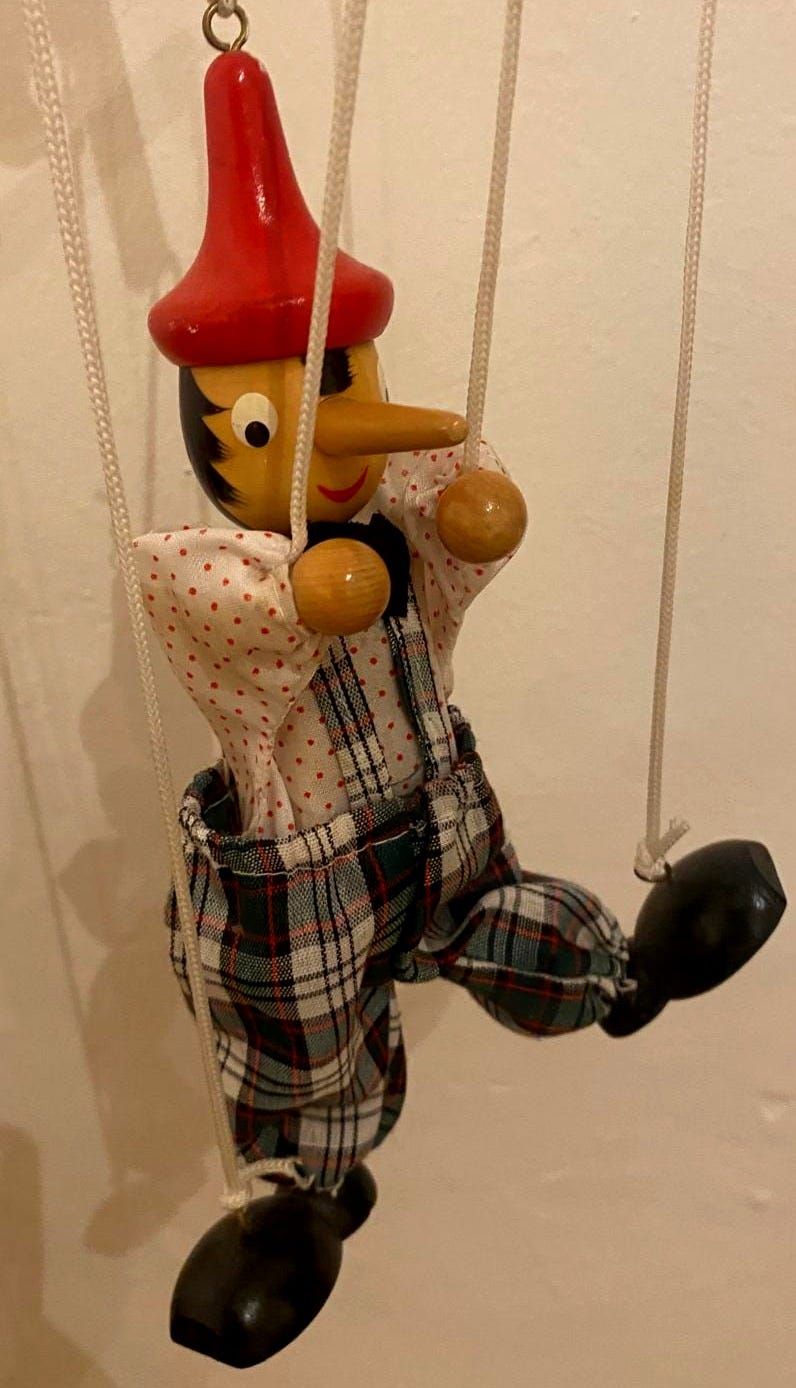
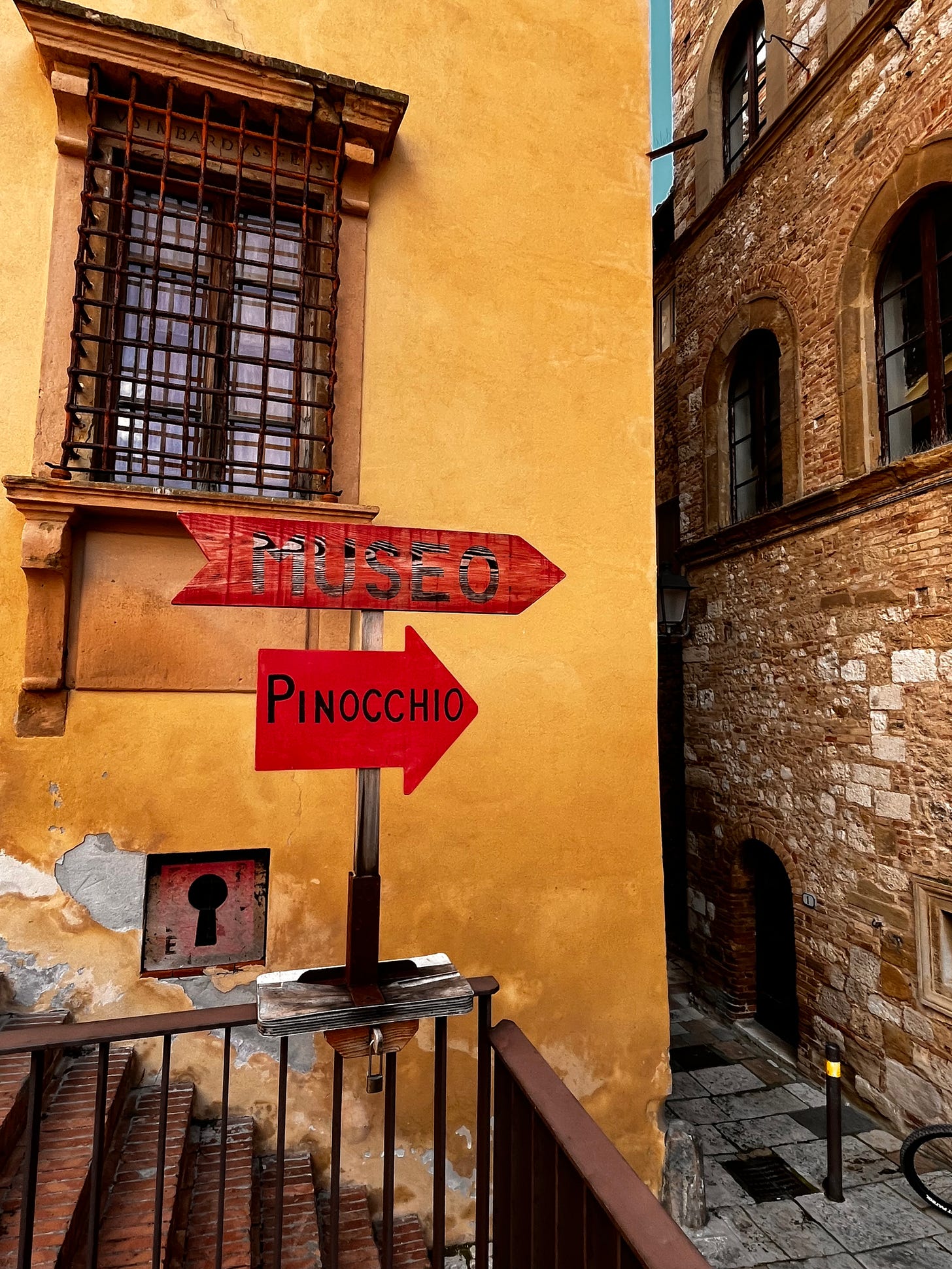
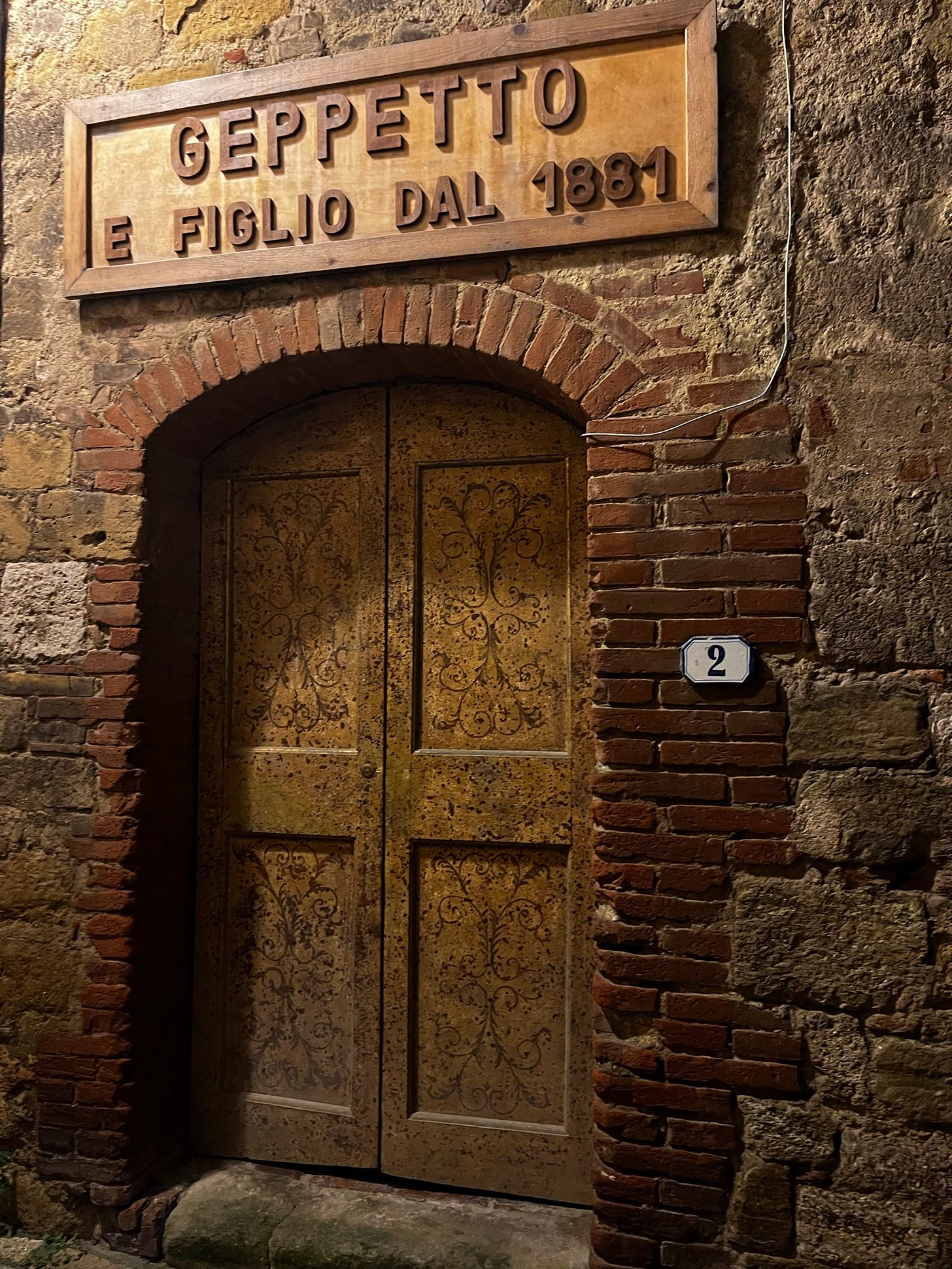
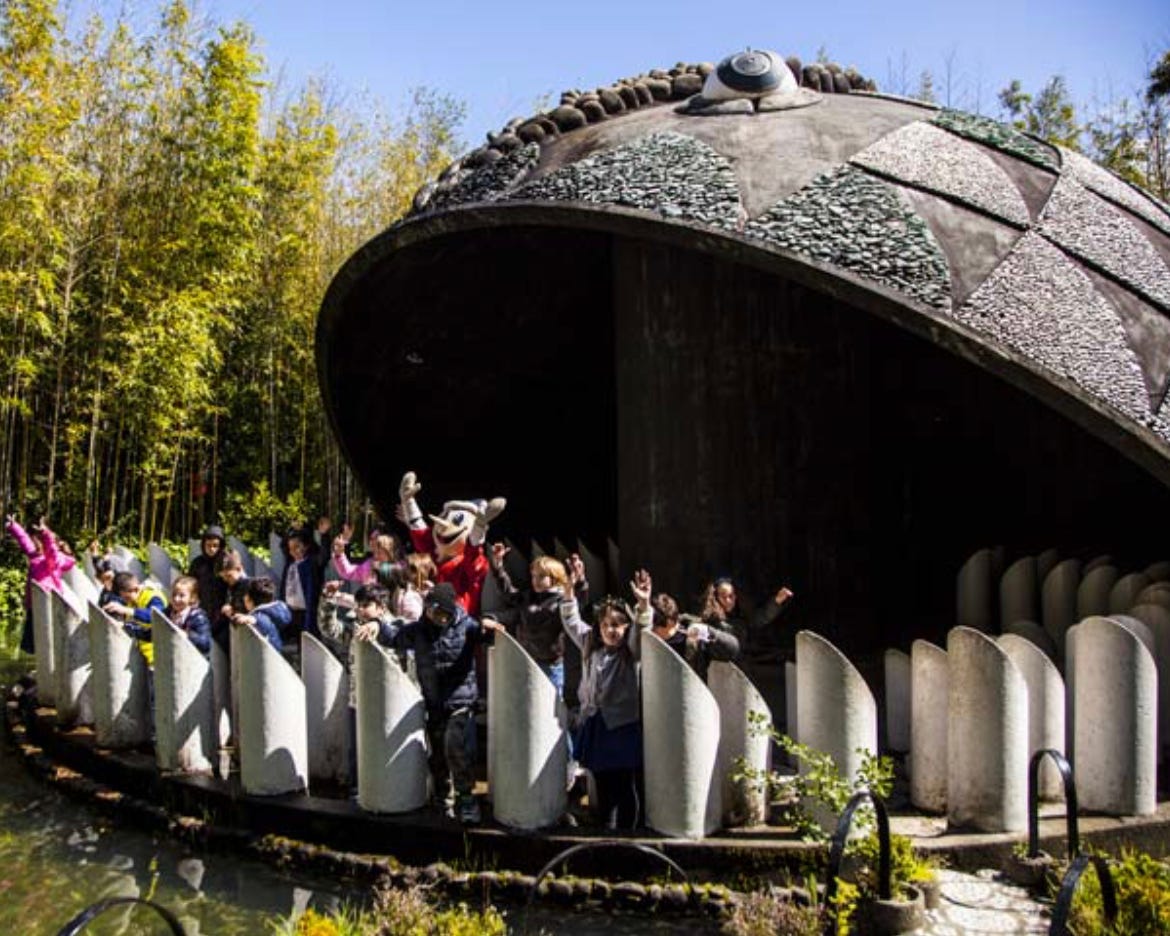
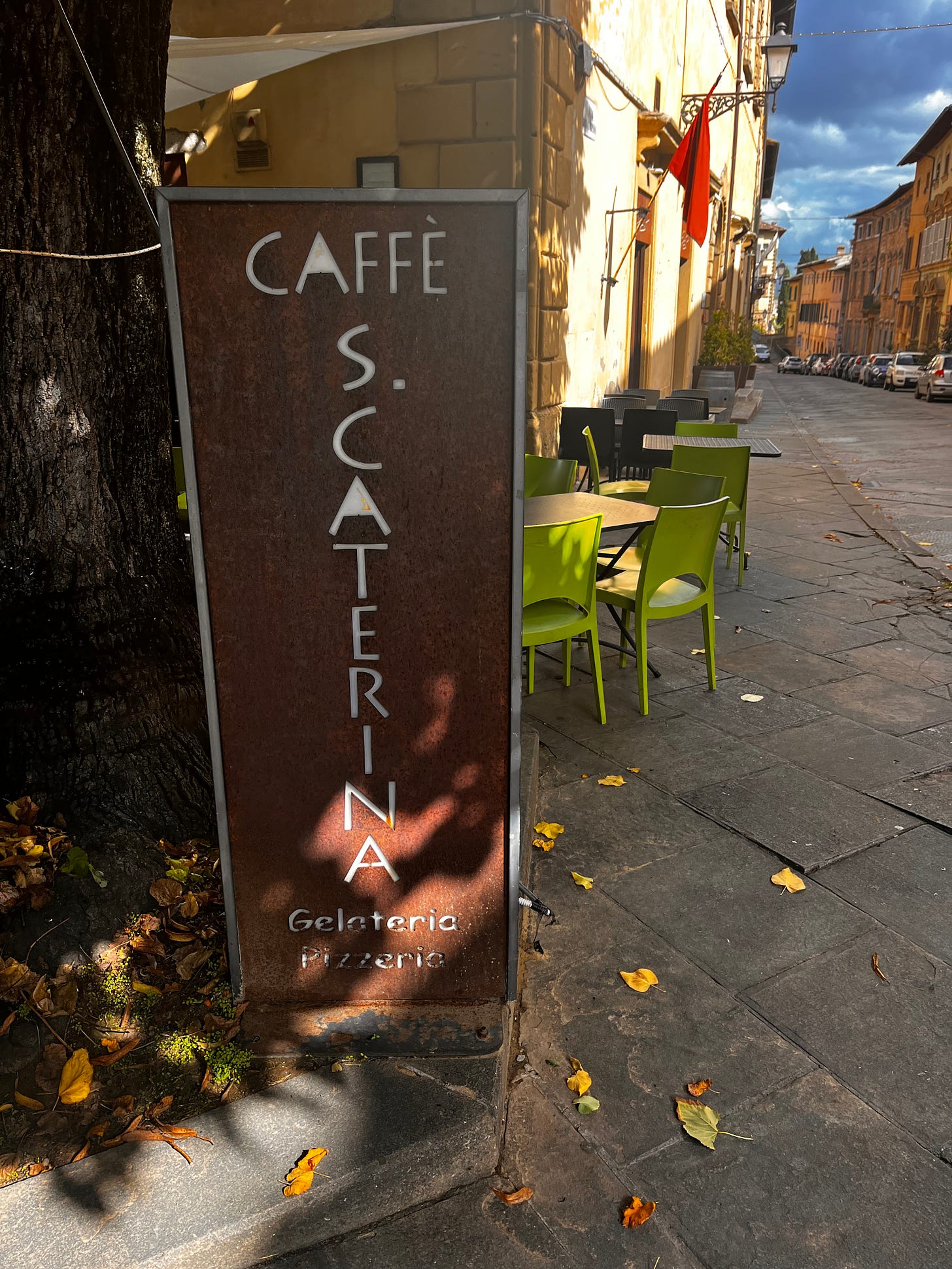
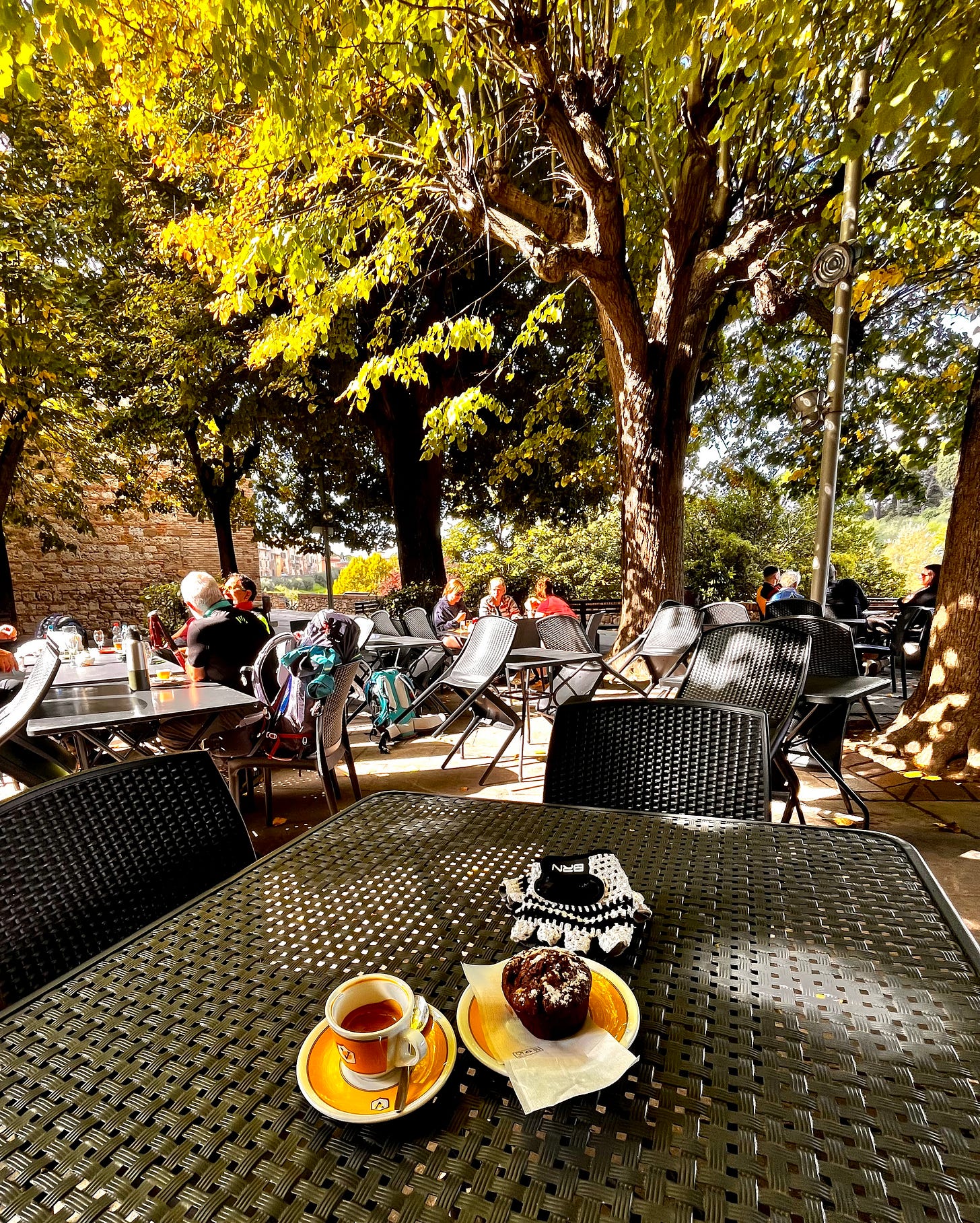
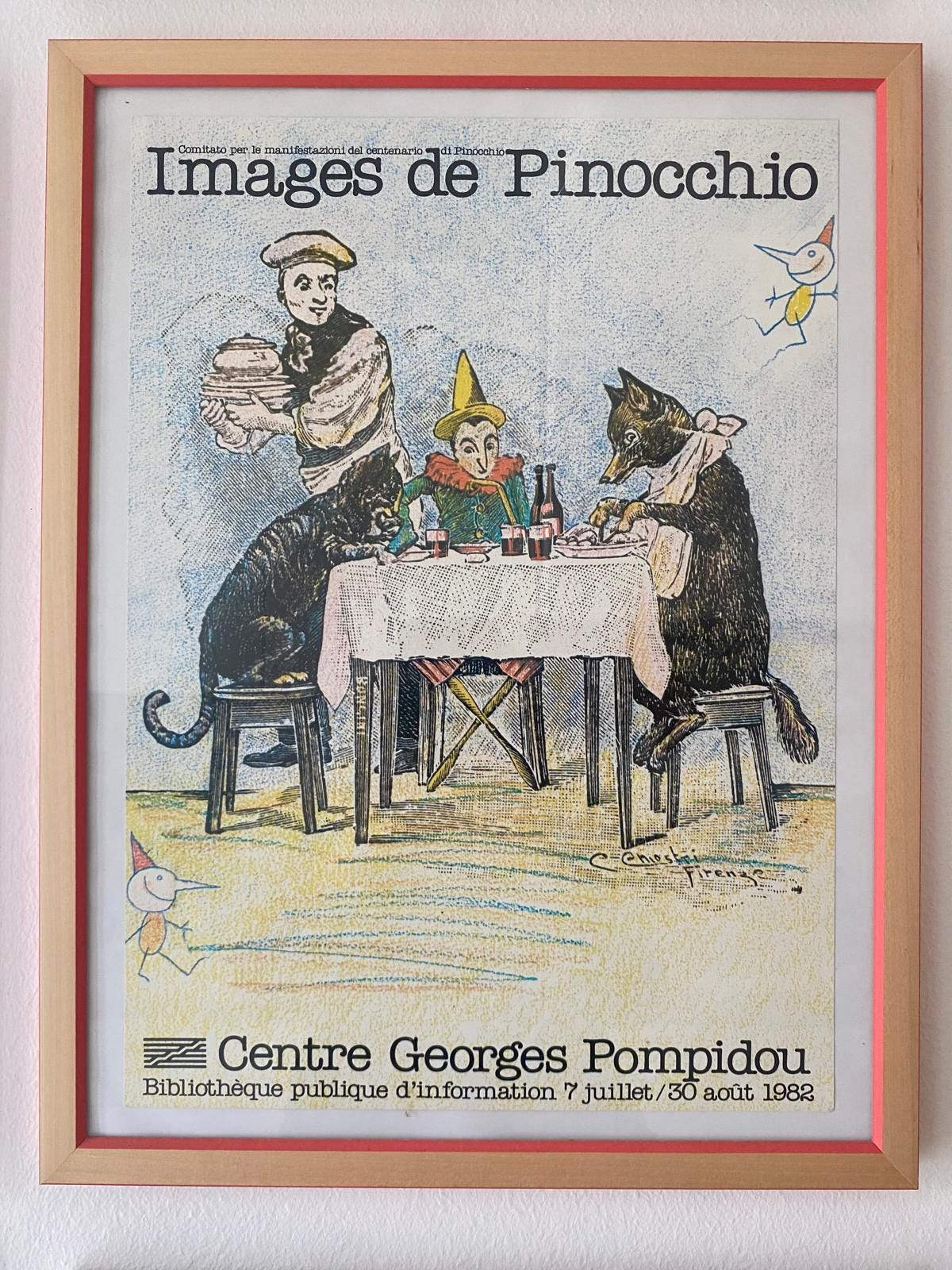
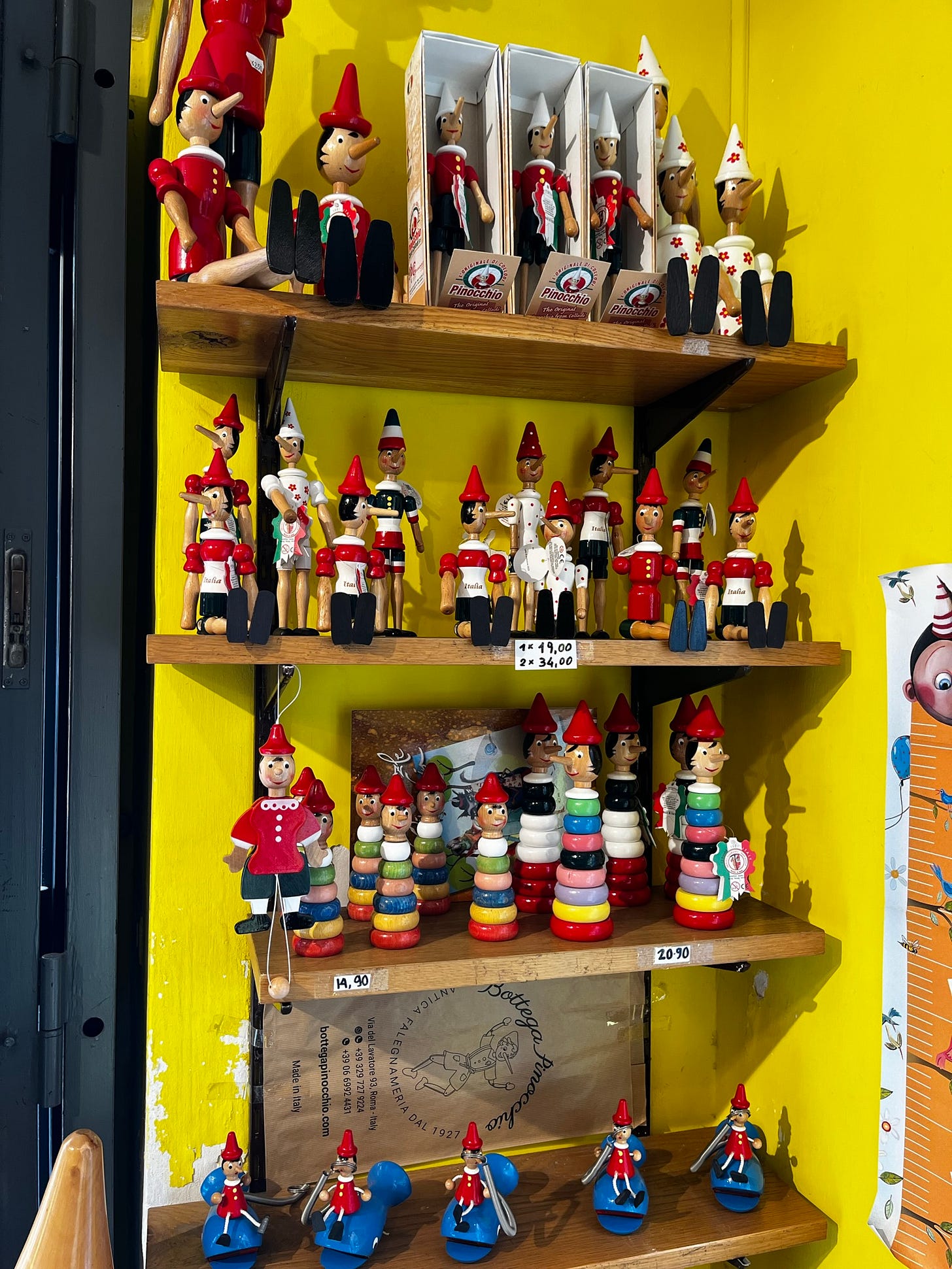
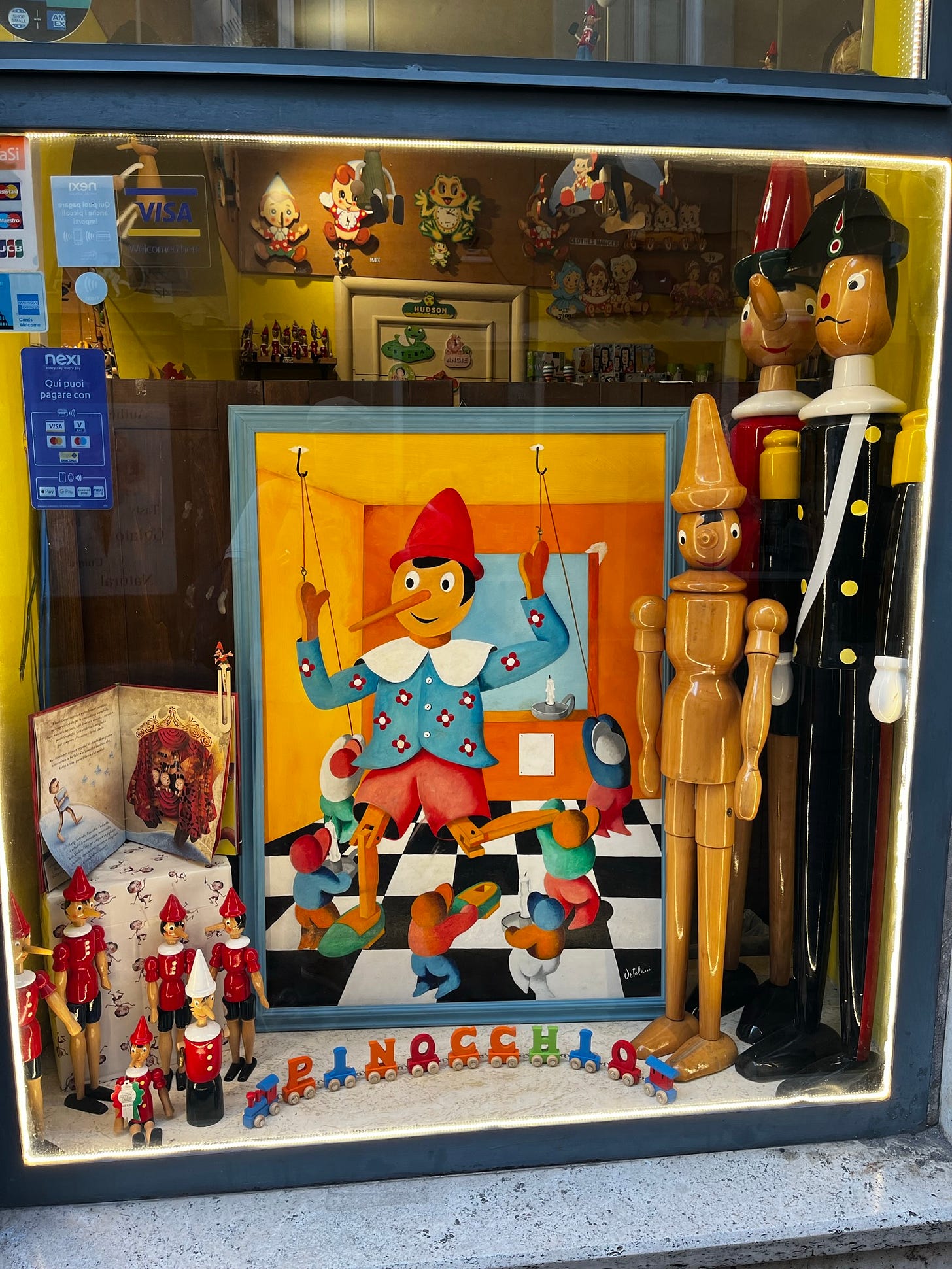
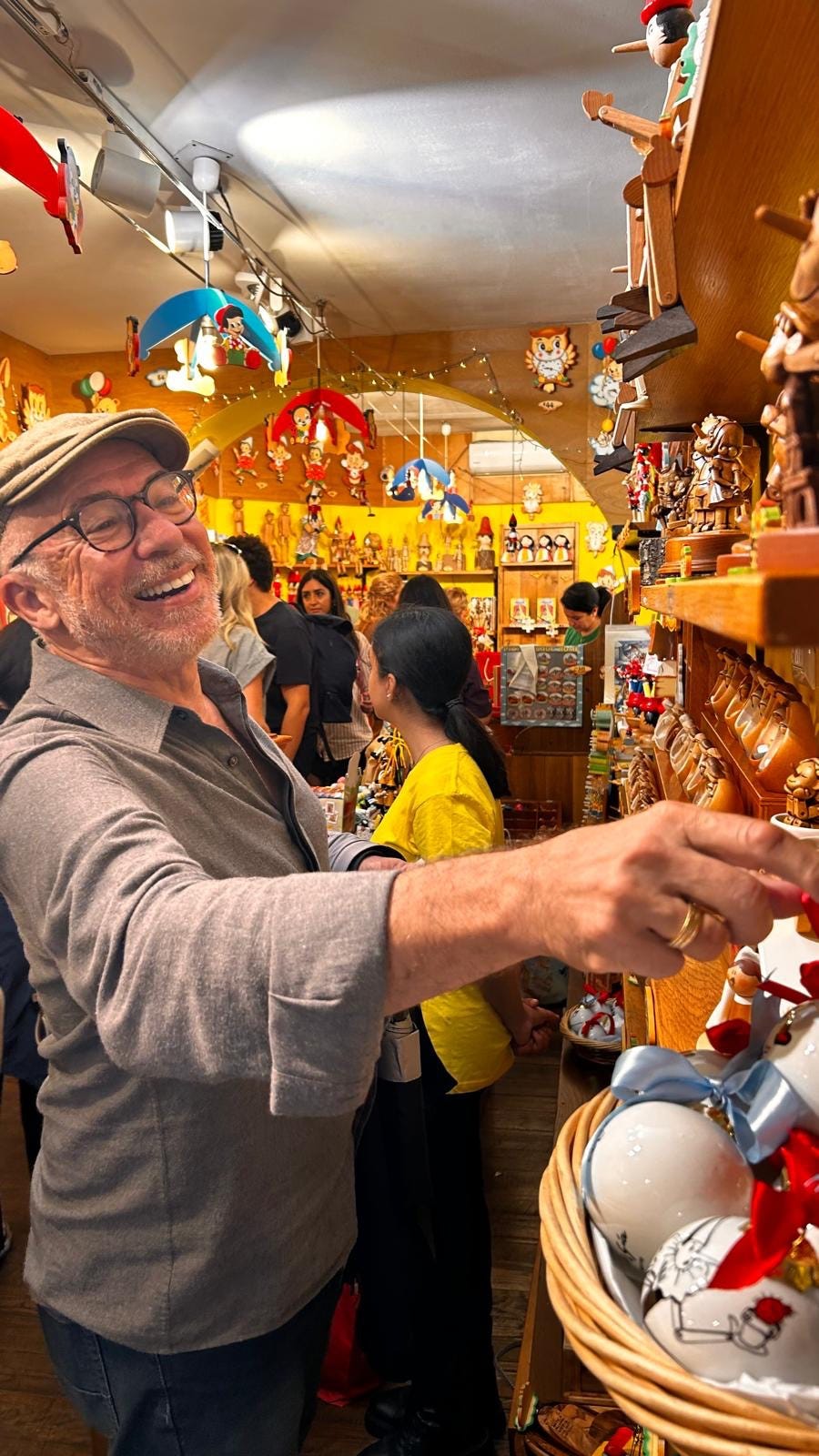
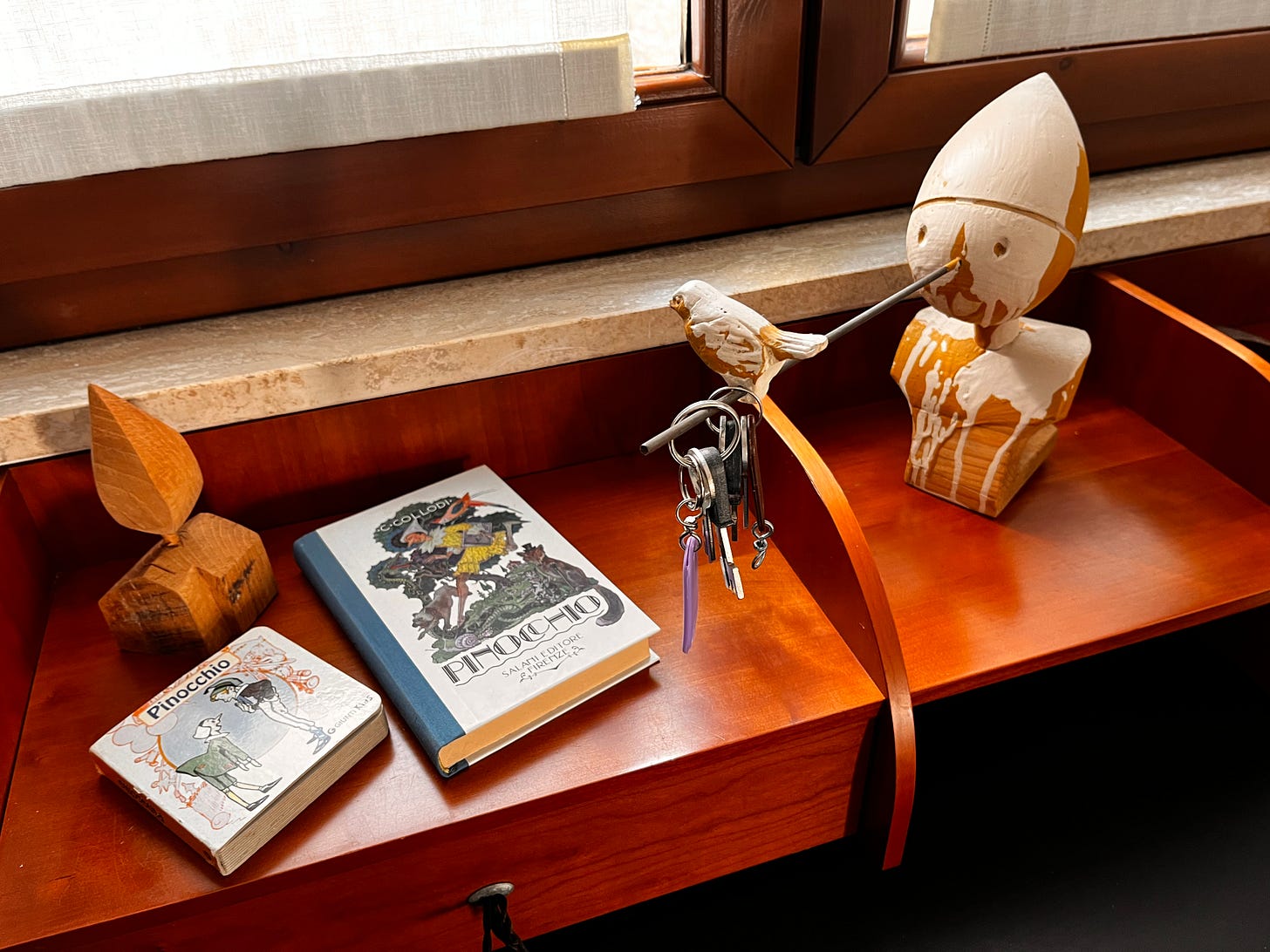
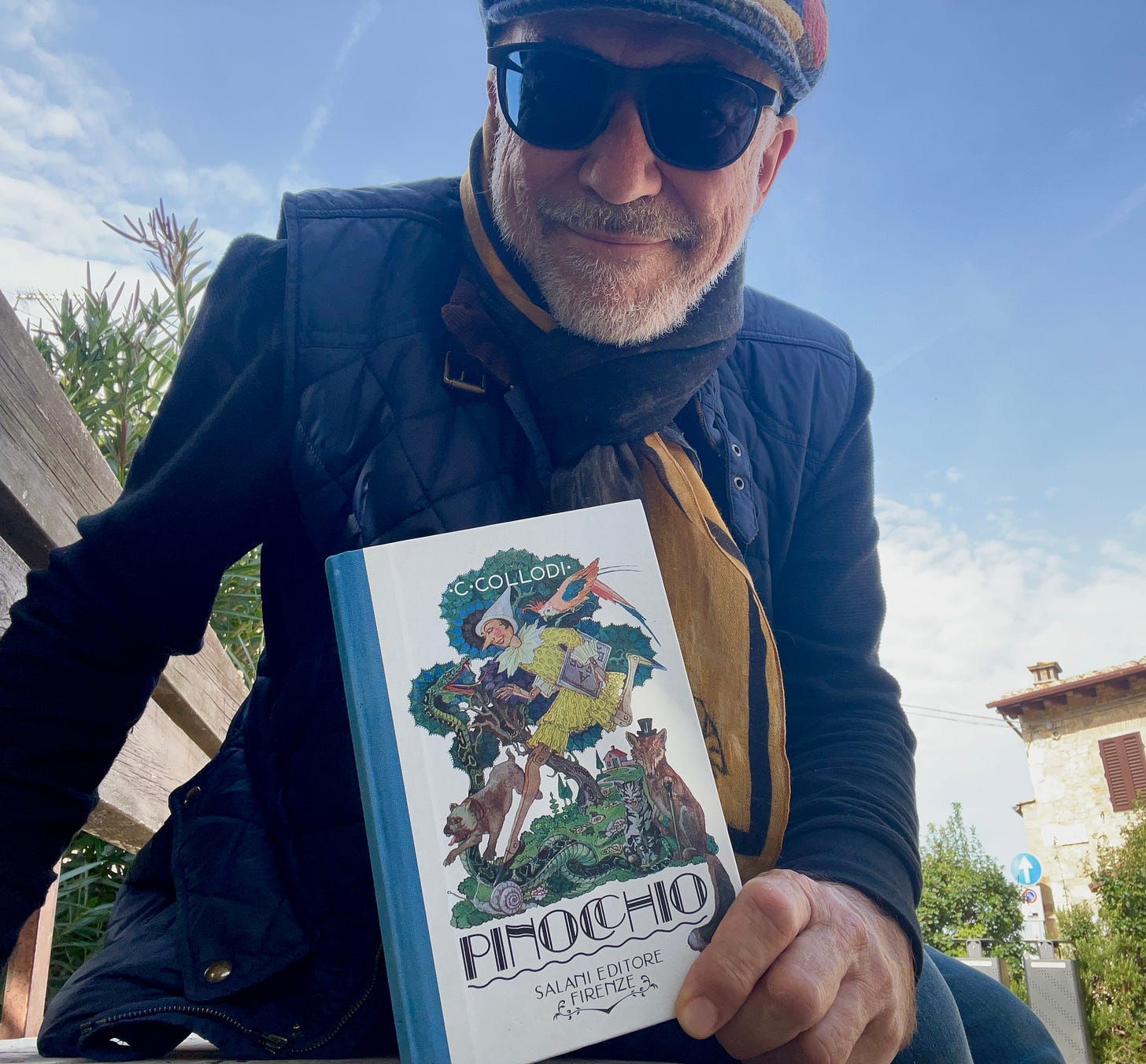
What a beautiful story! Well written and entertaining! Thank you for bringing Pinocchio to life.
Vraiment bon Tino, je n’avais jamais pensé que cette petite marionnette en bois avait une si grande signification. J’ai bien aimé les messages que pouvaient véhiculer les personnages. En particulier celui de Geppetto qui dit : fait attention à ceux qui désirent établir une relation avec toi uniquement pour tirer avantages de toi.
François